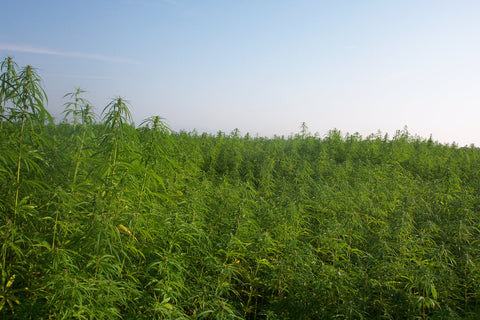Have you ever wondered how hemp, a versatile and sustainable crop, is cultivated? Let's dive into the intricate process of hemp cultivation, exploring both outdoor and indoor farming methods, along with their respective risks and benefits.
Outdoor Hemp Cultivation
Outdoor hemp cultivation involves planting seeds directly in the soil, allowing the plants to grow under natural sunlight. Hemp plants do not require extreme amounts of water to grow, so irrigation may not be necessary depending on the climate of the region. This method is cost-effective and allows for large-scale production. Hemp has the unique ability to stifle the growth of invasive weeds. However, outdoor cultivation is susceptible to weather conditions, pests, and diseases, which can impact the quality and yield of the crop.
Indoor Hemp Cultivation
Indoor hemp cultivation takes place in controlled environments such as greenhouses or indoor grow rooms. This method provides growers with more control over factors like light, temperature, and humidity, resulting in higher quality and more consistent yields year-round. However, indoor cultivation requires more resources and energy, making it a more expensive option. Hydroponic indoor farming involves growing plants in a nutrient-rich water solution, while conventional indoor growing uses soil as the growing medium.
Differences and Benefits
While outdoor cultivation is more cost-effective, indoor cultivation offers greater control and consistency. Indoor farming allows for year-round production and the ability to grow high-quality hemp strains. On the other hand, outdoor cultivation relies on natural resources and can benefit from the symbiotic relationship between hemp plants and the environment.
Risks and Considerations
Outdoor cultivation is vulnerable to weather fluctuations, pests, and diseases, which can impact the overall yield and quality of the crop. Indoor cultivation, on the other hand, requires careful monitoring of environmental conditions and energy consumption. Both methods have their own set of risks and considerations that growers must take into account.
Impact of the 2018 Farm Bill
The 2018 Farm Bill legalized the cultivation of hemp at the federal level in the United States, opening up new opportunities for farmers and businesses. This legislation has led to a surge in hemp cultivation across the country, with more states legalizing the crop for commercial production. The Farm Bill has provided a framework for the regulation of hemp cultivation, ensuring quality control and standardization in the industry.
In conclusion, hemp cultivation involves a complex process that varies depending on the method used. Whether grown outdoors or indoors, hemp cultivation requires careful planning, monitoring, and management to ensure a successful harvest. With the support of the 2018 Farm Bill, the hemp industry is poised for growth and innovation in the years to come.





Comments (0)
There are no comments for this article. Be the first one to leave a message!